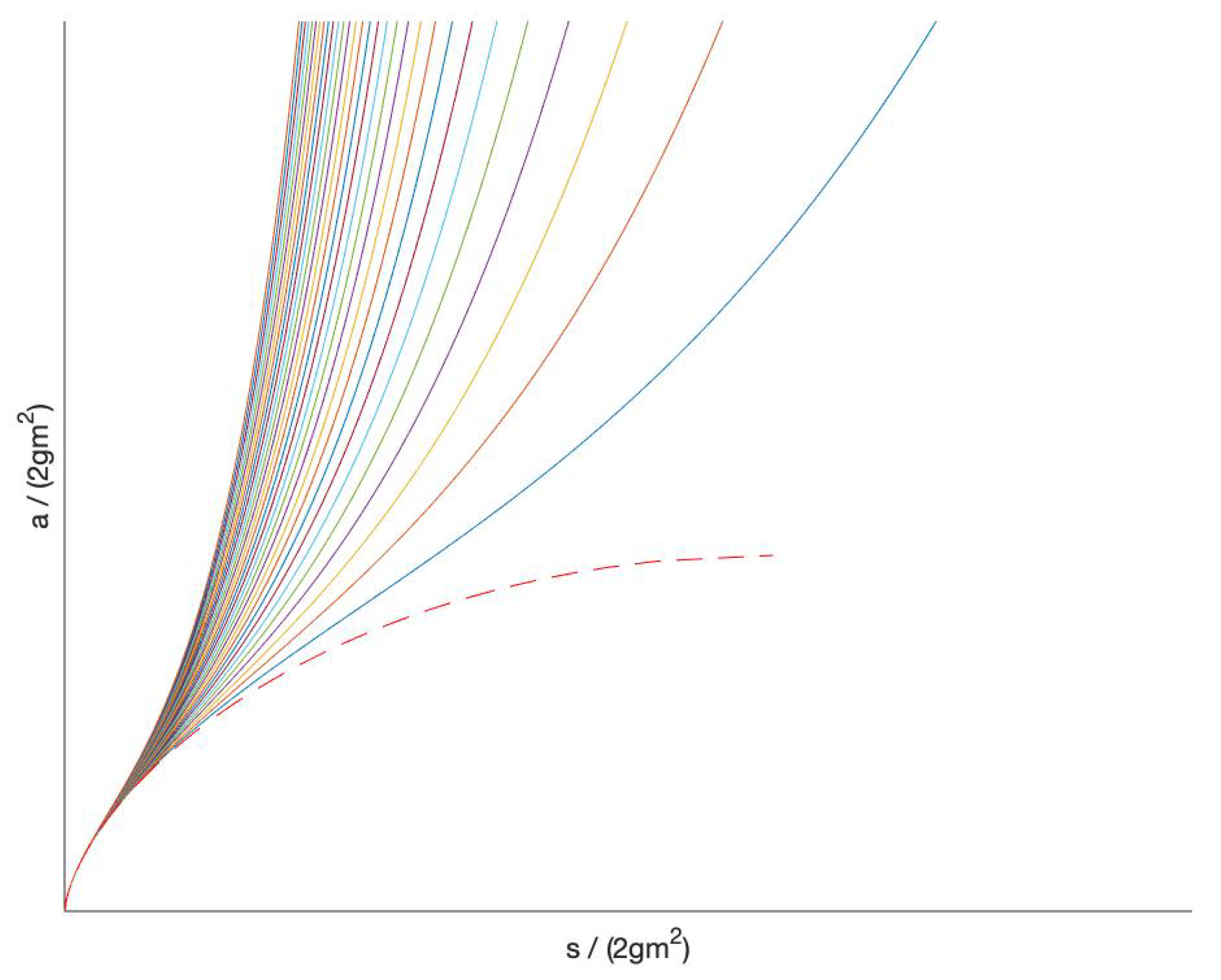Energy Conservation Law in the Closed Universe and a Concept of the Proper Time
Abstract
:1. Introduction
2. Modification of a Homogeneous Anisotropic Model of the Universe
3. “Mass” of the Universe
4. Conclusions
Author Contributions
Funding
Acknowledgments
Conflicts of Interest
References
- Fradkin, E.S.; Vilkovisky, G.A. Quantization of relativistic systems with constraints. Phys. Lett. 1975, 55, 224–226. [Google Scholar] [CrossRef]
- Batalin, I.A.; Vilkovisky, G.A. Relativistic S-matrix of dynamical systems with boson and fermion constraints. Phys. Lett. 1975, 69, 309–312. [Google Scholar] [CrossRef]
- Henneaux, M. Hamiltonian form of the path integral for theories with a gauge freedom. Phys. Rep. 1985, 126, 1–66. [Google Scholar] [CrossRef]
- Ore, F.R.; van Nieuwenhuizen, P. Local BRST symmetry and the geometry of gauge-fixing. Nucl. Phys. B 1982, 204, 317–332. [Google Scholar] [CrossRef]
- Govaerts, J. A note of the Fradkin-Vilkovisky theorem. Int. J. Mod. Phys. A 1988, 4, 4487–4504. [Google Scholar] [CrossRef] [Green Version]
- Fock, V.A. Die Eigenzeit in der klassischen- und in der Quanten-mechanik. Bull. Russ. Acad. Sci. 1937, 2, 568–576. [Google Scholar]
- Schwinger, J. On gauge invariance and vacuum polarization. Phys. Rev. D 1951, 82, 664–679. [Google Scholar] [CrossRef]
- Gorobey, N.; Lukyanenko, A. Time and Observables in Covariant Quantum Theory. arXiv 2020, arXiv:2001.09003v1. [Google Scholar]
- Gorobey, N.; Lukyanenko, A.; Goltsev, A.V. Feynman Propagator for a System of Interacting Scalar Particles in the Fokker Theory. arXiv 2020, arXiv:2002.03607v1. [Google Scholar]
- Lim, E.A.; Sawicki, I.; Vikman, A. Dust of dark energy. J. Cosmol. Astropart. Phys. 2010, 2010, 12. [Google Scholar] [CrossRef] [Green Version]
- Chamseddine, A.H.; Mukhanov, V. Mimetic dark matter. J. High Energ. Phys. 2013, 2013, 135. [Google Scholar] [CrossRef] [Green Version]
- Misner, C.W.; Thorne, K.S.; Wheeler, J.A. Gravitation; W.H. Freeman and Company: San Francisco, CA, USA, 1973; pp. 487–500. [Google Scholar]

© 2020 by the authors. Licensee MDPI, Basel, Switzerland. This article is an open access article distributed under the terms and conditions of the Creative Commons Attribution (CC BY) license (http://creativecommons.org/licenses/by/4.0/).
Share and Cite
Gorobey, N.; Lukyanenko, A.; Drozdov, P. Energy Conservation Law in the Closed Universe and a Concept of the Proper Time. Universe 2020, 6, 174. https://doi.org/10.3390/universe6100174
Gorobey N, Lukyanenko A, Drozdov P. Energy Conservation Law in the Closed Universe and a Concept of the Proper Time. Universe. 2020; 6(10):174. https://doi.org/10.3390/universe6100174
Chicago/Turabian StyleGorobey, Natalia, Alexander Lukyanenko, and Pavel Drozdov. 2020. "Energy Conservation Law in the Closed Universe and a Concept of the Proper Time" Universe 6, no. 10: 174. https://doi.org/10.3390/universe6100174
APA StyleGorobey, N., Lukyanenko, A., & Drozdov, P. (2020). Energy Conservation Law in the Closed Universe and a Concept of the Proper Time. Universe, 6(10), 174. https://doi.org/10.3390/universe6100174



